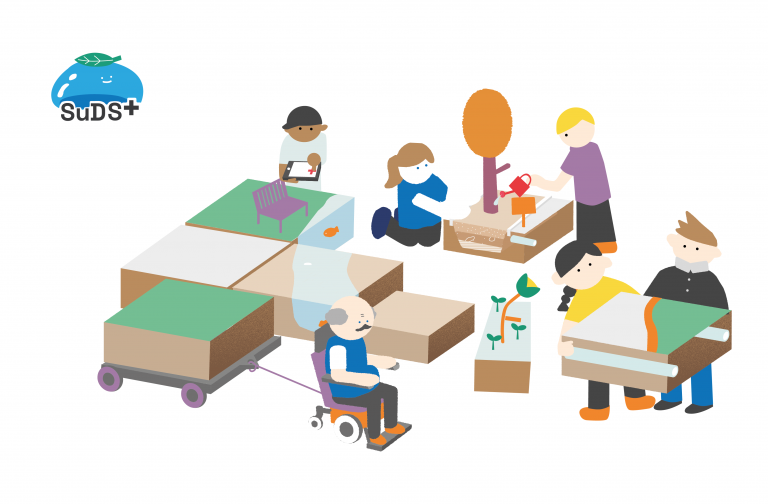Durham Road Project Underway
Work has begun on a second SuDS+ project in South Stanley. This is on a completely different scale to our Cleveland/Cheviot project and takes place near Durham Road. On a piece of land which is already permanently damp. Volunteers have constructed two 10-15cm bunds (soil wall) which will help to slow water at times of peak rainfall. This should increase the moisture in the soil above the bund allowing water to pass through the soil more slowly than previously.

In our 2023 community engagement residents were asked to indicate areas to be improved and several suggested this piece of land could do with a makeover and had problems with waterlogging.

This site’s suitability for the bund installation was confirmed by computerised software which predicts the flow paths of water after it falls as rain. Underfoot wet conditions and the growth of sedge reeds which love saturated soil were also an indicator this would be a perfect site. We have previously buried moisture sensors which will tell us if the soil above the bund becomes wetter after the project has been completed.

The two bunds are created around the wettest part of the site. These will then be scattered with grass seeds and if weather permits water loving shrubs and perennials will hopefully be planted soon. Planting has been funded by Karbon Homes. The current dry, mild forward forecast would not help establish the plants and this work may not be possible and planting will take place during the winter of 2025-26.

Overall this project has 2 aims;
- Create a sustainable drainage (SuDS) feature to slow the flow of ground water down the side of Durham Road. This leads to the Nature Reserve below St Stephen’s Centre and the Combined Sewer Outfall which discharges sewage into the Stanley Burn. In 2023, this sewer storm overflow spilled 94 times for a total of 385.50 hours , discharging into the Stanley Burn. . While it would be impossible to prove the bund creation and habitat creation on Durham Road reduced the number or duration of spills, slowing the flow of water at peak times should help.
- Increase biodiversity on a monoculture grass space. Increased habitat for wildlife, especially birds and insects by introducing new plant species, breaking up areas of mowed grassland and creating a more interesting landscape.
Watch out for an update in a few months with data from the site.







